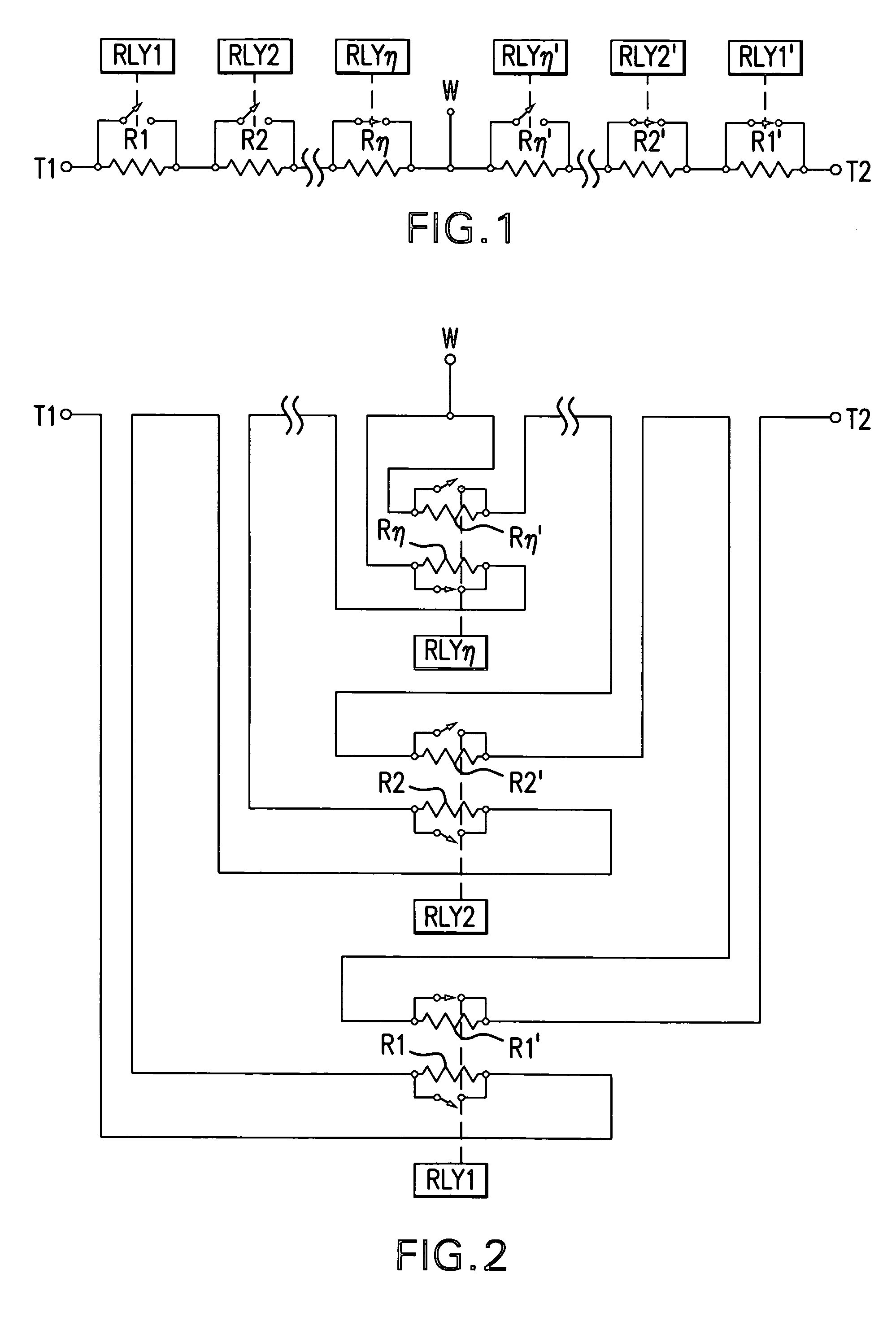Digital potentiometer
a digital potentiometer and potentiometer technology, applied in the direction of resistors, adjustable resistors, electrical equipment, etc., can solve the problems of resistance precision and drift associated with mechanical analog potentiometers, fet devices as taught by the prior art cannot respond to alternating currents or reverse currents, and fet devices that cannot work with this potentiometer
- Summary
- Abstract
- Description
- Claims
- Application Information
AI Technical Summary
Benefits of technology
Problems solved by technology
Method used
Image
Examples
Embodiment Construction
[0029]The invention may use a serial port to precisely set resistance values using a defined control sequence sent to the potentiometer device over a serial port. Actual switching of resistor shorts or resistor position from one side of a wiper to another can be easily implemented by relays controlled by the computerized sequence. This device when fully implemented may display the requested resistance on a computer screen or a display device incorporated into a test instrument. The potentiometer can be paired with a “slave” potentiometer to create a Wheatstone bridge circuit that works using either AC or DC signals.
[0030]The potentiometer of this invention which utilizes resistors and relays will have electrical characteristics exactly like a standard analog potentiometer in that there is no need to consider the polarity or absolute sign of the signal applied. In this invention, the speed at which the resistance can be changed is limited by the speed of the micro-mechanical relays. ...
PUM
 Login to View More
Login to View More Abstract
Description
Claims
Application Information
 Login to View More
Login to View More - R&D
- Intellectual Property
- Life Sciences
- Materials
- Tech Scout
- Unparalleled Data Quality
- Higher Quality Content
- 60% Fewer Hallucinations
Browse by: Latest US Patents, China's latest patents, Technical Efficacy Thesaurus, Application Domain, Technology Topic, Popular Technical Reports.
© 2025 PatSnap. All rights reserved.Legal|Privacy policy|Modern Slavery Act Transparency Statement|Sitemap|About US| Contact US: help@patsnap.com



